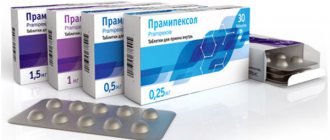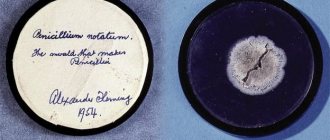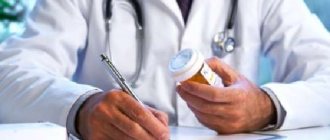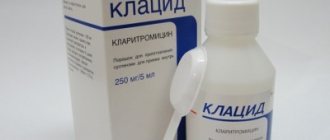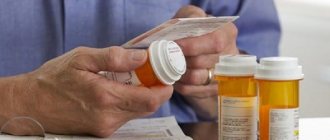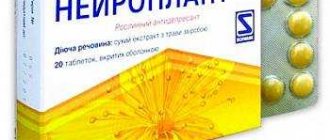Treatment of diseases caused by bacterial infections is carried out with the help of antibiotics, presented in natural, semi-synthetic and synthetic forms. Broad-spectrum antibiotics of the new generation, the list of which includes drugs with different chemical structures, differ in effectiveness, duration of treatment and side effects. Unlike narrowly targeted antibacterial agents, drugs with a broad spectrum of action are effective against many bacteria (up to 20 strains) and act on most pathogens.
Penicillins
These are common and cheap antibiotics, most of them are available in tablets and suspensions, so they are easy to use in outpatient practice (clinic, consultation centers).
Indicated for infection with gram-positive, gram-negative (gonococcus, meningococcus, E. coli, Haemophilus influenzae, Helicobacter pylori, salmonella) microbes. The drugs do not affect Proteus, mycoplasma, rickettsia. They have a bactericidal effect (complete destruction of cells).
| A drug | Tradename | Method of application, price (rub.) |
| Amoxicillin | Amoxicillin | Tablets: 0.5 g each. twice a day, course of administration for 2 weeks. 40-70 |
| Flemoxin Solutab | Tablets: 0.5 g each. twice a day, course of administration for 2 weeks. 400-530 | |
| Amosin | Capsules: similar regimen and duration of administration. 80-115 | |
| Powder for suspension: pour the powder from the bag into a glass with warm, clean water, stir. 45-90 | ||
| Amoxicillin + clavulanic acid | Amoxiclav | Tablets: 1 tablet (250+125 mg) three times a day or 1 tablet (500+125 mg) twice a day; take with food, course of treatment for 2 weeks. 225-385 |
| Powder for suspension: use the attached tables to calculate the dose of the medicine. 130-280 | ||
| Flemoklav Solutab | Tablets: 1 tablet (500+125 mg) three times a day or 1 tablet (875+125 mg) twice a day; do not chew, take at the beginning of meals, take the course for 2 weeks. 300-450 | |
| Augmentin | Powder for suspension: add 60 ml of clean water at room temperature to the bottle with the powder, wait 5 minutes, add the volume of water to the mark on the bottle, mix. 150-450 | |
| Tablets: 1 tablet (250+125 mg) three times a day, course of administration for 2 weeks. 250-380 rub. | ||
| Ampicillin | Ampicillin | Tablets: 0.25-0.5 g. every 6 hours 30-60 minutes before meals. 10-60 |
| Powder for suspension: 1.0-3.0 g. per day in 4 doses; To prepare the mixture, add 62 ml of water to the bottle, the dosage of the mixture is carried out using the attached measuring spoon, take with warm water. 20-65 | ||
| Powder substance: 0.25-0.5 g. every 4-6 hours intravenously/intramuscularly. 15-145 |
Form of drug releases
There are several forms of antibiotic release. Each of them has its own strengths and weaknesses. The specific purpose depends on the age of the patient, the type and severity of bacterial infection:
- tablets, capsules. Advantage: simple and painless application. Disadvantages: dependence on gastrointestinal motility, possible errors with dosage;
- syrups. As a rule, they are used in the treatment of children. The disadvantage is the same: problems with dosage accuracy;
- ointments, liniments (liquid creams), drops and suppositories - used for local treatment and avoid systemic effects on the body;
- injections. The advantages include 100% bioavailability (for intravenous use). Cons: soreness.
Carbapenems
Modern “reserve” antibiotics, used only if there is no effect from other equally strong antimicrobial drugs. The range of action of carbapenems covers gram-positive and gram-negative bacteria, Pseudomonas aeruginosa.
Members of this group exhibit resistance to MRSA (methicillin-resistant Staphylococcus aureus). Meropenem is one of the best broad-spectrum antibiotics in the fight against meningococcal infection. The effect is bactericidal.
| Representatives | Trade name, price (RUB) | Mode of application |
| Imipenem + cilastatin | Tienam 4500-4800 | Powder for injection solution: 2.0 g each. per day, administered in 4 injections intravenously/intramuscularly. |
| Tsilapenem 340-380 | Powder for injection solution: 1.0-2.0 g. per day, administered intravenously in 3-4 infusions. To prepare the solution, add 100 ml of isotonic sodium chloride to the bottle and shake until smooth. | |
| Tiepenem 330-400 | Powder for injection solution: 1.0-2.0 g. per day, administered intravenously in 3-4 infusions. To prepare the solution, you need to add isotonic sodium chloride to the bottle in a ratio of 100 ml of sodium chloride per 0.5 g. drug, shake until completely homogeneous. | |
| Tsilaspen 340-360 | Powder for injection solution: the method of preparing the solution and using it is similar to the above. | |
| Meropenem | Meronem 6000-11000 | Powder for injection solution:
The medicine is administered intravenously slowly (within 5 minutes; the solution is prepared by adding 5 ml of sterile water per 250 mg of the drug) or intravenously drip (within 15-30 minutes; the solution is prepared by adding 50-200 ml of isotonic sodium chloride). |
| Meropenem 300-350 | Powder for injection solution:
| |
| Ertapenem | Invanz 2300-2500 | Lyophilisate for injection solution: 1.0 g. per day, administered in 1 injection intravenously/intramuscularly. |
| Doripenem | Doriprex 8000-21000 | Powder for injection solution: 0.5 g each. intravenously every 8 hours. To prepare the solution, the powder must be dissolved in 10 ml of isotonic sodium chloride solution, the resulting mixture should be added to a bag with 100 ml of isotonic sodium chloride solution or 5% glucose solution. |
New generation antibacterial agents
The difference between the latest generations of antibiotics and their earlier versions is a more advanced formula of the active substance. Active components specifically eliminate only pathological reactions in the cell. For example, new generation intestinal antibiotics do not disrupt the microflora of the gastrointestinal tract. At the same time, they fight an entire “army” of infectious agents.
The newest antibacterial drugs are divided into five groups:
- Tetracycline – tetracycline.
- Aminoglycosides – streptomycin.
- Penicillin series - amoxicillin and others.
- Amphenicols – chloramphenicol.
- Carbapenem group – meropenem, imipenem, invaz.
Let's consider several well-known antimicrobial agents of imported and Russian production.
Amoxicillin is an imported antimicrobial drug from the penicillin group. Used in medical practice to treat bacterial infections. Effective for intestinal infections, sinusitis, sore throat, Lyme disease, dysentery, sepsis.
Avelox is the latest generation of medications from the group of fluoroquinolones. It has a strong effect on bacterial and atypical pathogens. Does not harm the kidneys and gastrointestinal tract. Used for acute and chronic diseases.
Cephalosporins are third generation antibiotics. This group includes Ceftibuten, Ceftriaxone and others. Used to treat pyelonephritis and pneumonia. In general, these are safe products with few side effects. However, they should be taken only after consulting a doctor. There are many medications, but a specialist will recommend which one to choose.
Doriprex is an imported antimicrobial drug of synthetic origin. Showed good results in the treatment of pneumonia, advanced intra-abdominal infections, pyelonephritis.
Invaz is an antibacterial agent from the carbapenem group. Available in ampoules for parenteral administration. Shows a rapid effect in the treatment of bacterial disorders of the skin, soft tissues, urinary tract infections, pneumonia, septicemia.
Augmetin is a third generation semi-synthetic penicillin with the addition of enhancing inhibitors. Pediatricians recognize it as the best comprehensive medication for the treatment of childhood sinusitis, bronchitis, tonsillitis and other respiratory tract infections.
Cefamandole is a Russian-made antibacterial agent. Belongs to the group of third generation cephalosporins. Used to treat intestinal infections, pathogens of genital infections. As an antimicrobial agent with a wide range of effects, it is used for colds.
Aminoglycosides
The spectrum of drug activity includes:
- Staphylococci.
- Gram-negative microbes.
- Pathogens of specific infections - plague, brucellosis, tularemia.
- Pseudomonas aeruginosa.
- Acinetobacter.
- Mycobacterium tuberculosis.
At the same time, for the 1st generation the main indication is tuberculosis infection, for the 2nd and 3rd generations – Pseudomonas aeruginosa infection. They have a bactericidal effect.
1st generation:
| Representatives | Trade name, price (RUB) | Mode of application |
| Kanamycin | Kanamycin 12-650 | Powder for injection solution: 1.0-1.5 g each. for 2-3 injections intravenously (a single dose (0.5 g) is dissolved in 200 ml of a 5% dextrose solution). |
| Kanamycin sulfate 605-750 | Powder substance:
For tuberculosis – 1.0 g. x 1 time per day. For other infections - 0.5 g. every 8-12 hours. | |
| Streptomycin | Streptomycin sulfate 20-500 | Powder substance:
|
| Streptomycin 8-430 | Powder for injection solution: 0.5–1.0 g. x 2 times a day intramuscularly. To prepare the solution, use sterile water/saline solution/0.25% novocaine. Calculation: per 1.0 g. medications - 4 ml of solvent. | |
| Neomycin | Neomycin 360-385 | External aerosol: on the affected areas of the skin, shake well and place the can at a distance of 15-20 cm, apply for 3 seconds; Repeat application 1-3 times a day. |
2nd generation:
| Representatives | Tradename | Method of application, price (rub.) |
| Gentamicin | Gentamicin sulfate | Powder substance:
Administer the medicine intramuscularly/intravenously. 40-250 |
| Gentamicin | Solution for injection: 0.003-0.005 g. per 1 kg of weight for 2-4 injections, administered intravenously/intramuscularly. 45-120 | |
| Eye drops: 1-2 drops every 1-4 hours, retracting the lower eyelid. 160-200 | ||
| Ointment: 3-4 applications per day to affected areas of the skin. 90-150 | ||
| Tobramycin | Tobrex | Eye drops: 1-2 drops, pulling back the lower eyelid, every 4 hours; for severe eye infections - 2 drops every hour. 170-220 |
| Bramitob | Solution for inhalation: 1 ampoule of medication (0.3 g) every 12 hours, administered by inhalation using a nebulizer, course 28 days. 19000-33000 | |
| Tobriss | Eye drops: 1 drop, pulling back the lower eyelid, 2 times a day (morning and evening); for severe eye infections - 1 drop x 4 times a day. 140-200 |
3rd generation:
| Representatives | Trade name, price (RUB) | Mode of application |
| Netilmicin | Nettatsin 420-500 | Eye drops: 1-2 drops, pulling back the lower eyelid, 3 times a day. |
| Vero-Netilmicin 160-200 | Solution for injection: 4-6 mg per 1 kg of body weight per day intravenously/intramuscularly; for severe infections, the daily dose can be increased to 7.5 mg per 1 kg. | |
| Amikacin | Amikacin 50-1600 | Solution for infusion: 0.01-0.015 g. per 1 kg of body weight per day for 2-3 injections, administered intramuscularly/intravenously (stream, drip). |
| Amikacin sulfate 50-150 | Powder substance: 0.005 g each. per 1 kg of weight every 8 hours or 0.0075 g. per 1 kg of body weight every 12 hours, administered intramuscularly/intravenously. | |
| Spectinomycin | Kirin 300-450 | Powder for making a suspension: 2.0 g each. (5 ml)/4.0 g. (10 ml) deep intramuscularly into the upper outer part of the buttock. To prepare the suspension, you need to add 3.2 ml of sterile water to the vial. Suspension for single use, storage is prohibited. |
| Framycetin | Isofra 340-380 | Nasal spray: 1 injection into each nasal passage x 4-6 times a day, course for no more than 10 days. |
4th generation:
| Representatives | Trade name, price (RUB) | Mode of application |
| Isepamycin | Isepamycin 250-410 | Solution for injection: 8-15 mg per 1 kg of body weight intravenously/intramuscularly. |
Overdose
Violation of the instructions often provokes complications in the form of an overdose, especially when used independently for a long period of time. The condition is accompanied by acute symptoms such as nausea, repeated vomiting throughout the day and uncontrollable diarrhea.
An overdose can provoke seizures, severe tachycardia and dehydration as a result of impaired absorption of fluid in the patient’s digestive tract. The liver and kidneys may impair the functioning of organs, as well as aggravate the symptoms of diseases of the cardiovascular system.
In case of overdose, the allergy occurs in an acute form and can provoke Quincke's edema or acute urticaria. This poses a threat to the patient's life.
Glycopeptides
They are also confidently designated as new generation broad-spectrum antibiotics. Their bactericidal influence includes:
- Gram-positive bacteria, including MRSA and MRSE (methicillin-resistant Staphylococcus epidermidis).
- Enterococci.
- Anaerobes, including Clostridium difficile, the causative agent of pseudomembranous colitis.
Vancomycin stands out as one of the last antibiotics most commonly prescribed in hospitals. The effect of the drugs is bactericidal, only on enterococci and streptococci - bacteriostatic (“inhibition” of bacterial activity).
| Representatives | Trade name, price (RUB) | Mode of application |
| Vancomycin | Editsin 600-700 | Lyophilisate for infusion solution: 2.0 g. per day strictly intravenously (0.5 g every 6 hours or 1.0 g every 12 hours). |
| Vancomycin 180-360 | Powder for infusion solution: 0.5 g. every 6 hours or 1.0 g. every 12 hours. | |
| Teicoplanin | Teicoplanin 400-450 | Lyophilisate for infusion solution: 0.4 g each. every 12 hours intravenously/intramuscularly. |
| Telavantzin | Vibative 8000-10000 | Lyophilisate for infusion solution: 10 mg per 1 kg of body weight every 24 hours, administered intravenously (at least an hour). |
Possible complications
Despite all the benefits that a broad spectrum of antibiotics provides, such medications cannot be considered a panacea. Their uncontrolled use can affect health.
In particular, the following complications arise:
- According to some data, children who took broad-spectrum antibiotics in the first year of life are more susceptible to developing asthma.
- Improper use of antibiotics can lead to decreased sensitivity to drugs. This is often observed in people who did not complete the full course of therapy, but stopped treatment before the period specified by the doctor. In this case, the antibiotic managed to kill only weak and sensitive bacteria. The remaining ones begin to multiply, cause a new round of disease, but can no longer be treated with the original antibiotic.
- Long-term use of some drugs leads to serious complications. Penicillins can have a toxic effect on the central nervous system, and streptomycin can damage the auditory nerve.
- Destruction of beneficial microflora and subsequent problems with the gastrointestinal tract. Broad-spectrum antibiotics destroy all bacteria, including those we need. Therefore, probiotics or prebiotics are often prescribed along with them, which help maintain normal intestinal health.
Therefore, the universal spectrum of action of antibiotics is not at all a reason to treat them yourself. Only a doctor can select the appropriate drug, prescribe doses, and prescribe the duration of the course. And, of course, it is the specialist who determines the advisability of taking antibiotics as such.
Macrolides
Slightly toxic drugs that have a bactericidal effect on:
- gram-positive bacteria (streptococci, staphylococci, mycobacteria);
- gram-negative bacilli (enterobacteriaceae, Helicobacter pylori, Haemophilus influenzae);
- intracellular microorganisms (moraxella, legionella, mycoplasma, chlamydia).
14-member:
| Representatives | Tradename | Method of application, price (rub.) |
| Clarithromycin | Klacid | Tablets: 0.5 g each. twice a day, taken for 2 weeks. 510-800 |
| Granules for preparing a suspension: to prepare the mixture, pour warm water up to the mark on the bottle, stir, take 2 times a day. 355-450 | ||
| Solution for infusion: 0.5 g. twice a day. 650-700 | ||
| Fromilid | Tablets: 0.5 g twice a day, taken for 2 weeks. 290-680 | |
| Clarithrosin | Tablets: 0.25 g each. twice a day, taken for 2 weeks. 100-150 | |
| Roxithromycin | RoxyHEXAL | Tablets: 0.15 g each. twice a day or 0.3 g. in one dose, course of treatment 10 days. 110-170 |
| Esparoxy | Tablets: 0.15 g each. twice a day 15 minutes before meals or 0.3 g. once, the course of administration is 10 days. 330-350 | |
| Rulid | Tablets: 0.15 g each. twice a day, course of treatment is 10 days. 1000-1400 | |
| Oleandomycin | Oleandomycin phosphate | Powder substance. Practically not used at present. 170-200 |
| Erythromycin | Erythromycin | Tablets: 0.2-0.4 g. four times a day before or after meals, washed down with water, course of administration is 7-10 days. 70-90 |
| Lyophilisate for preparing a solution for infusion: 0.2 g, diluted with a solvent, 3 times a day. The maximum course of treatment is 2 weeks. 550-590 | ||
| Eye ointment: place behind the lower eyelid three times a day, course of use is 14 days. 70-140 | ||
| External ointment: apply a small layer to the affected areas of the skin 2-3 times a day. 80-100 |
15-member:
| Representatives | Tradename | Method of application, price (rub.) |
| Azithromycin | Sumamed | Capsules: 0.5 g each. x 1 time per day before or 2 hours after meals. 450-550 |
| Powder for oral suspension: add 11 ml of water to the bottle, shake, take 1 time per day before or after meals. 220-570 | ||
| Tablets: 0.5 g each. x 1 time per day before or after meals. 250-580 | ||
| Azitral | Capsules: 0.25-0.5 g each. x 1 time per day before or after meals. 280-340 | |
| Azitrox | Capsules: 0.25-0.5 g each. x 1 time per day. 280-330 | |
| Powder for oral suspension: add 9.5 ml of water to the bottle, shake, orally 2 times a day. 130-370 |
16-member:
| Representatives | Tradename | Method of application, price (rub.) |
| Midecamycin | Macropen | Tablets: 0.4 g each. three times a day, course of administration for 2 weeks. 250-340 |
| Josamycin | Vilprafen | Tablets: 0.5 g each. twice a day, without chewing, with water. 530-620 |
| Vilprafen solutab | Tablets: 0.5 g each. x twice a day, without chewing or dissolved in 20 ml of water. 650-750 | |
| Spiramycin | Spiramycin-vero | Tablets: 2-3 tablets (3 million IU) in 2-3 doses per day. 220-1750 |
| Rovamycin | Tablets: 2-3 tablets (3 million IU) or 5-6 tablets (6-9 million IU) for 2-3 doses per day. 1010-1700 |
Cephalosporins
The wide spectrum of influence includes representatives of the 3rd and 5th generations of cephalosporins. A destructive bactericidal effect was observed against gram-negative (enterobacteriaceae, hemophilus influenzae, gono- and meningococcus, Klebsiella, moraxella, protea), anaerobic (peptococci, peptostreptococci, bacteroides, clostridia) and gram-positive microbes.
3rd generation:
Parenteral:
| Representatives | Tradename | Method of application, price (rub.) |
| Cefotaxime | Claforan | Powder for injection solution: 0.5-2.0 g. x 1 time per day intramuscularly or intravenously slowly. 120-150 |
| Cephosin | Powder for injection solution: 1.0 g each. every 8-12 hours intramuscularly, intravenously slowly/drip. 50-75 | |
| Ceftazidime | Fortum | Powder for injection solution: 1.0-6.0 g. x 1 time per day for 2-3 intravenous/intramuscular infusions. 450-530 |
| Ceftidine | Powder for injection solution: 1.0-6.0 g. x 1 time per day intravenously/intramuscularly. 155-200 | |
| Ceftriaxone | Ceftriaxone | Powder for injection solution: 1.0-2.0 g. x 1 time per day intramuscularly/intravenously. 30-900 |
| Azaran | Powder for injection solution: 1.0 g. dissolve in 3.5 ml of 1% solution of lidocaine hydrochloride, intramuscular injections 1 time per day. 2350-2600 | |
| Cefoperazone | Cephobid | Powder for injection solution: 2.0-4.0 g. per day for 2 intramuscular injections. 250-300 |
| Tsefpar | Powder for injection solution: 2.0-4.0 g. every 12 hours intravenously/intramuscularly. 35-105 |
Oral:
| Representatives | Tradename | Method of application, price (rub.) |
| Cefixime | Suprax | Capsules: 0.4 g each. x 1 time per day. 700-780 |
| Suprax Solutab | Effervescent tablets: 0.4 g each. x 1 time per day or 0.2 g. x 2 times a day, dissolve in advance in a glass of water. 800-1000 | |
| Pantsef | Tablets: 0.4 g each. once a day or 0.2 g. twice a day. 380-590 | |
| Ceftibuten | Tsedex | Capsules: 0.4 g each. once a day. 800-1000 |
| Cefditoren | Spectraceph | Tablets: 0.2-0.4 g. x 2 times a day. 1350-1440 |
5th generation (parenteral):
| Representatives | Tradename | Method of application, price (rub.) |
| Ceftobiprole | Zeftera | Lyophilisate for injection solution: not used in the Russian Federation. |
| Ceftaroline | Zinforo | Powder for injection solution: 0.6 g. every 12 hours intravenously for an hour. 25000-27000 |
Bottom line
Antibiotics are powerful substances of natural, synthetic or semi-synthetic origin that help suppress the growth and activity of pathogenic microorganisms.
Broad-spectrum drugs are effective against most bacteria at the same time, and their new generation causes minimal harm to the body.
The selection of a suitable drug depends first of all on the diagnosis, then on its mechanism of action, the degree of toxicity and pharmacokinetic properties. Independent selection and use of antibacterial drugs is dangerous and unacceptable.
Antibiotics for children
Prescribing broad-spectrum antibiotics for children is possible, however, not in all cases. All dosages for children of different ages are usually calculated per 1 kg of body weight and do not exceed adult doses. To understand which particular drug belongs to the list of children's antibiotics with a wide coverage of pathogenic microorganisms, you need to carefully study the attached instructions. We must not forget that each antibiotic has its own age-related characteristics.
Broad-spectrum antibiotics are indispensable medicines for hospitals of any level and profile of medical services. Ease of use and high probability of a beneficial effect make them invaluable in the treatment of a wide variety of infections. To maintain the susceptibility of microbes to these drugs, do not start taking them on your own without consulting a doctor and adhere to the correct dosage regimen.
Author:
Selezneva Valentina Anatolyevna physician-therapist
Spectrum of action
There are antibacterial agents:

